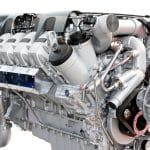A vehicle’s power steering system plays a significant role in how a motorist handles the car and navigates onward. Through a series of critical working functions, cars can turn corners, switch lanes, and control directional shifts more efficiently. In this article, we discuss the different types of power steering systems you can find today and how each plays a part in its respective vehicles.
Electric Power Steering
An electric power steering system will use fewer parts than most other steering systems. This type of system will use significantly less power from the engine and help maintain a healthy fuel economy. In an electric steering system, there are torque sensors and smart software that allow the driver to navigate according to road conditions and feel.
Another benefit of electric power steering is a reduced amount of wear on the engine. When the engine wear reduces, you can expect it to last much longer compared to those that use other steering systems.
Hydraulic
A hydraulic power steering system is the most well-known option. This type of system requires power steering fluid to create flow within the lines. Another critical part of a working hydraulic power steering system is 1, which assists in rotational changes and directional shifts.
The power steering pump can send the fluid and communicate with the serpentine belt directional shifts. The serpentine belt plays a critical role in how well the communication works, and sometimes when the belt slips, users may notice a tension at the wheel or struggle to steer.
Hybrid Electro-Hydraulic Power Steering
The hybrid system combines hydraulic and electric functions and eliminates the need for a serpentine belt or engine accessory drive. This system works by having the hydraulic-style pump send the electric engine communication at lower speeds and provides the power needed.
When at high speeds, the power applied is reduced because assistance may be unnecessary. One of the most significant advantages of a hybrid power steering system is how comfortable it is for the driver to maneuver, even though steering can become semi-firm at higher speeds.
There are a few different types of power steering systems, and understanding how they work helps you take better care of your vehicle. Where motorists often need to top off the fluids, some may find that their steering system uses smart sensors, and no fluids are necessary. Refer to your vehicle’s manual to determine which system you have for proper care and handling.
Check out 1 for all your car needs.
















Leave a comment